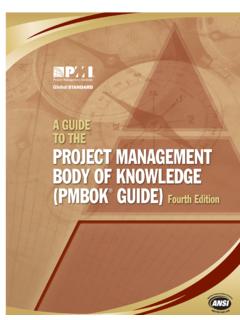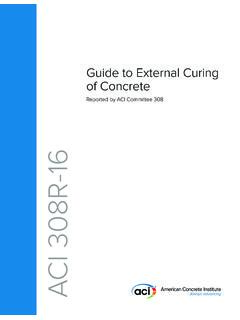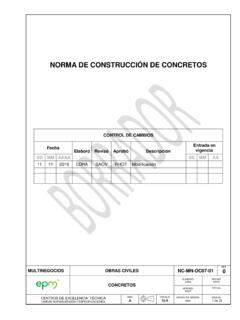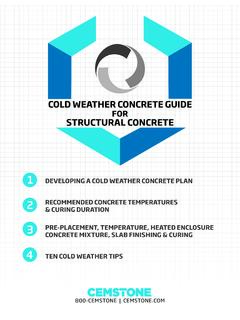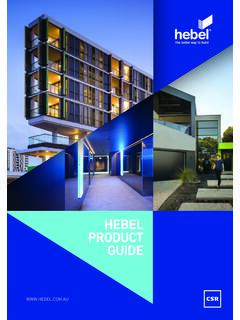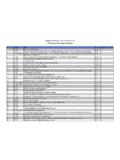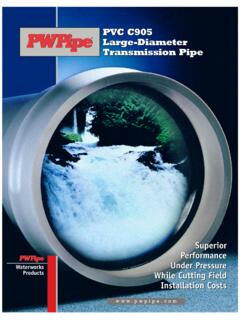Transcription of STANDARD SPECIFICATIONS FOR CONSTRUCTION WORKS …
1 STANDARD SPECIFICATIONS FOR CONSTRUCTION WORKS 2008 MMoodduullee 0022 CCoonnccrreettee Page 1 Introduction The STANDARD SPECIFICATIONS are published as a series of 21 stand-alone modules each addressing a single distinct area of the CONSTRUCTION process. This stand-alone module 02 is an integral part of the STANDARD SPECIFICATIONS . The purpose of the MoW STANDARD SPECIFICATIONS FOR CONSTRUCTION is to provide the design professional with a guide for accepted CONSTRUCTION practices for Ministry of WORKS projects. As an aid to the designer, these STANDARD SPECIFICATIONS are provided for the inclusion in proposed development projects for ease, efficiency and cost savings. The STANDARD SPECIFICATIONS are not intended to limit the design responsibility of the design professional.
2 However, they establish a minimum acceptable criterion and/or quality for use within Ministry of WORKS projects. The design professional may increase the requirements of an item contained in the STANDARD SPECIFICATIONS to meet job requirements, but when this is done, there should be no reference for that item on the drawings to the Ministry of WORKS STANDARD SPECIFICATIONS and a new specification should be included with the drawings or project contract documents. The design professional must review all STANDARD SPECIFICATIONS to be sure that they are adequate for the proposed project based on the job site conditions; the design professional is solely responsible for the designs submitted under his seal. In order to keep design standards current with changing regulations and improved CONSTRUCTION materials and practices this section will be updated and maintained by the concerned authorities of the Ministry of WORKS .
3 Prior to starting a new project, the design professional should contact the concerned Directorate of the Ministry of WORKS to verify that he/she has the latest document revisions. Page 2 Module List Module No Module Title 01 Guidance and General SPECIFICATIONS 02 concrete 03 Earthworks 04 Glass and Glazing 05 Joinery and Carpentry 06 Ironmongery 07 Internal Finishes including Thermal Insulation 08 Painting and Decorating (Internal & External) 09 Metalwork 10 Roofing 11 Structural Steel (and Coatings) 12 Structural Timber 13 Masonry 14 Plumbing and Sanitary 15 Mechanical Installation in Buildings 16 Electrical Installation 17 Sewerage, Pipelines and Pipework 18 Sewerage M&E WORKS 19 Roadworks 20 Landscaping 21 Dredging, Reclamation and Shoreline Protection Page 3 Table of Contents CLAUSE DESCRIPTION PAGE Introduction 1 Module List 2 Table of Contents 3 Foreword 4 1 PART 1 MATERIALS 5 Sources 5 5 Repair and Protection 18 Delivery, Site Storage.
4 Handling and Protection of 2 PART 2 METHODOLOGY AND WORKMANSHIP 20 Method 20 Mix 21 Pour 30 35 36 37 Placing and 37 Curing and 43 45 Non-Compliant 48 3 PART 3 PRE-CAST concrete 49 Source and Type 49 Methodology and 50 4 PART 4 SPECIAL concrete 52 52 Lightweight 52 Pavement 53 No-Fines 54 Granolithic 54 Glass-Reinforced Cement (GRC).. 55 Mortars, Grout and 55 5 PART 5 SUMMARY 56 56 Reference 60 Abbreviations 67 Page 4 Foreword This specification provides the basis for using concrete in CONSTRUCTION . It covers the main requirements for selecting materials, identifying the concrete mixes required, the procedures for controlling the quality and requirements of producing, placing and finishing concrete . This specification must be read in its entirety, as it is structured in order of work-flow, which means that items or activities appear in several places in the specification corresponding to the progression of the CONSTRUCTION process.
5 For larger or more complex or specialist projects, a project-specific Particular Specification for concrete may be also be provided, which will, together with the drawings, Client s brief and details of the ground and service environments, provide a basis for selecting appropriate concrete materials. An assessment of the environment must be made as part of the design process. concrete of appropriate durability characteristics must be adopted. Quality control testing of production concrete is based on Acceptance Strength (AS), which is defined as the higher of the Structural Strength (SS) required by the Designer, and the Durability Strength (DS) obtained from the concrete mix required for durability purposes. The Flow Chart (attached) summarises the main stages involved in producing concrete to comply with this specification.
6 Absence of clauses for materials and methods does not necessarily signify that they cannot be used. Proposals for use of innovative methods and materials are encouraged and are subject to review and approval by the Client. Where the word approved is used in this specification, this means that the Client or Engineer has been consulted and has confirmed that the item or procedure is acceptable in the specific context for which approval has been requested. Page 5 1 PART 1 MATERIALS Source Approvals General A quality system shall apply for the supply and placement of concrete which conforms to this specification and complies with the relevant requirements of ISO 9001 including quality records, hold points, witness points and method statements. The Contractor shall submit to the Engineer a list of suppliers from whom he proposes to purchase materials and services.
7 All materials and associated testing shall be obtained from suppliers and laboratories operating an accredited third-party quality assurance system in accordance with ISO 9001. Documentary evidence shall be provided to demonstrate that the third-party accreditation is current and covers the materials or services being supplied, including but not limited to: Cement Aggregate Admixtures Reinforcement Testing. Where suppliers do not operate a suitable quality system then a proposed schedule of independent testing and auditing by an Accredited Laboratory or Accredited Testing Body shall be submitted for approval. The cost of undertaking such independent testing and auditing shall be at the Contractor s expense. Cementitious Materials Portland Cement The cement to be used throughout the WORKS shall be obtained from manufacturers approved in writing and shall be strength class or to BS EN 197-1.
8 Cement shall comply with the tricalcium aluminate (C3A) contents required in Table 1. Cement type for each mix shall be as shown in Tables 7 and 8, and in accordance with Building Research Establishment SP1. Table 1 C3A Contents for Cements Cement Type Applicable Standards C3A content Portland cement (PC): Ordinary Portland cement (OPC) Moderately sulphate resisting Portland cement (MSRPC) BS EN 197-1 ASTM C150 Type I 8% 13% 8% Sulphate resisting Portland cement (SRPC) BS 4027 ASTM C150 Type V Cement shall be certified by the manufacturer as complying with the requirements of the appropriate STANDARD (s). Before ordering cement, the Contractor shall submit details of the proposed supplier and information on the proposed methods of transport, storage and certification for approval and show that the quantity and quality required can be attained and maintained throughout the CONSTRUCTION period.
9 Page 6 Having obtained approval, the Contractor shall not change the agreed arrangements without permission. Each consignment of cement shall be accompanied by a certificate showing the place of manufacture and the results of STANDARD tests carried out on each day s bulk production included in the consignment. Cementitious materials shall be free from lumps and other deleterious matter and shall be otherwise undamaged when used. Before a concrete placement is started, sufficient cementitious materials shall be in storage at the batching plant to complete the placement. White Cement Cement for white concrete shall be white cement obtained from manufacturers approved in writing and shall comply with the requirements of BS EN 197-1 or ASTM C150. Strength class shall be not less than N.
10 A key advantage of using white cement for decorative and architectural concrete is that it provides a neutral tinting base and consistent colours results. Every colour option is possible with it, from pure white to bright and pastel colours. However, appropriate trial mixes shall be undertaken and care exercised at the batching plant to prevent contamination of cement silos, aggregate bins and other equipment with material which could alter the intended colour or lead to blemishes. Blast-Furnace Slag Ground granulated blast-furnace slag (GGBS) shall be used in a combination of Portland Cement to BS 197-1 and GGBS conforming to BS 6699 or BS EN 15167. Where the use of blast furnace slag inter-ground with Portland cement is proposed, this shall be from an approved source. The chemical and mechanical properties of the GGBS shall be as in Table 2.
